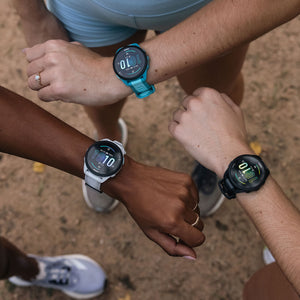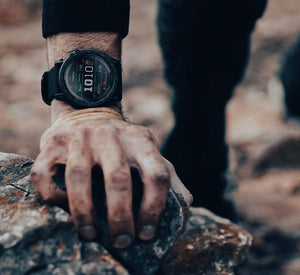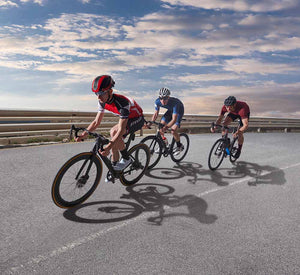
COROS PACE 4: Upgrades Without the Price Hike Might Make It the Best Budget Running Watch of 2025
COROS’s new PACE 4 brings AMOLED clarity, voice features, and elite endurance to runners who demand pro-level performance at a $249 price point.
Announced on November 10, 2025, the COROS PACE 4 is the latest evolution of COROS’s lightweight performance running watch line — and it’s already drawing attention for bringing a bright AMOLED display, upgraded sensors, and new voice-driven features to one of the most affordable serious training watches on the market. In this guide, we’ll break down everything you need to know: what’s new compared to the PACE 3, how it stacks up against Garmin’s closest rivals, what experts are saying, and who this watch is really built for — from everyday runners to data-driven athletes chasing every marginal gain.
COROS PACE 4 Review from Our Partner at Chase the Summit
What’s New on the COROS PACE 4
If you’re familiar with the earlier COROS PACE 3 and watching COROS’s evolution (e.g., the COROS APEX 4, COROS NOMAD), the PACE 4 adds a number of meaningful upgrades for serious runners and multisport athletes.
Here are the key changes compared to the Pace 3:
-
Display upgrade: Switched from a 1.2″ Memory-in-Pixel (MIP) display to a 1.2″ AMOLED screen (~1,500 nits brightness) with higher clarity.
-
Resolution increase: From 240×240px in the Pace 3 to 390×390px in the Pace 4.
-
Cover material improved: Mineral glass instead of plastic (improves durability and scratch resistance). (As mentioned in the spec summary.)
-
Added a dedicated “Action Button” (third physical button) inherited from higher-end COROS models.
-
Added a microphone for recording training logs and “Voice Pins” (i.e., voice notes tied to workouts) — though note: no speaker, so not full smart speaker functionality.
- Switched to newer optical HR sensor for better accuracy/spikes & drop reduction.
-
Battery time for GPS (“High GPS” / all-systems) increased versus Pace 3. COROS claims 41 hours in GPS mode, and up to 19 days in daily use.
-
Daily (non-GPS) battery life in always-on display modes has decreased compared to the MIP display of the Pace 3 (AMOLED uses more power) — COROS lists ~6 days in “always-on”.
-
New features:
-
Display-based flashlight (LED/backlight functionality) for low-light runs.
-
Voice Pins and training log voice notes (via mic) — you can speak directly after a set or interval to tag how you feel.
-
Media controls (e.g., control music/podcast on your phone) from the watch.
- Menstrual cycle tracking built-in to watch and app.
-
Display-based flashlight (LED/backlight functionality) for low-light runs.
-
Form-factor and physical specs:
- Band size remains 22 mm — maintains compatibility with existing straps.
-
Weight: 40g with silicone band; 32g with optional nylon band.
-
Thickness: 11.8 mm.
-
Offered in two “basic” colorways (black and white) with either silicone or nylon bands.
- Band size remains 22 mm — maintains compatibility with existing straps.
-
Price: Launch MSRP rises from $229 (PACE 3) to $249 (PACE 4).
Summary of new features takeaway: If you were using or considering the Pace 3, the PACE 4 gives you a sharper, brighter display, newer sensor hardware, added physical button + mic features, and better GPS endurance — all while staying in the budget-friendly ~$250 window. For runners who care about those tangible upgrades (especially display and sensor/platform longevity), this is a meaningful step up.
What the Experts Are Saying About the PACE 4 Running Watch
Here’s a snapshot of how the watch is being received by reviewers and tech analysts, geared toward savvy runners:
From Dave from Chase the Summit (in his video review):
“This thing is pretty awesome. I really like this little watch. ... might be one of the best options out there for a sport watch under $250 right now. … great user interface, a good app experience, crazy long battery life, a small, comfortable, light form-factor, and a great display at a compelling price point.”
He adds caveats:
- He wishes it had mapping like the higher-end COROS watches (it does not).
- He reports mixed HR accuracy so far and suggests waiting on firmware or re-testing sensor.
He concludes: for someone who wants a simple, lightweight sport watch (5 K, marathon, even 100 m ultra) it’s a strong fit.
From DC Rainmaker (in his in-depth review):
-
-
Confirms the PACE 4 brings the new action button (as seen in NOMAD/APEX) but notes the Action Button is still only usable in sport modes (and not fully customizable outside) — a minor limitation.
-
Calls out the display: “Obviously now an AMOLED display (1,500 nits)… no issues there.”
-
On battery charts: “GPS battery life is very solid here, easily surpassing the Pace 3 in every mode.”
- On form-factor: appreciates the smaller size/weight for running everyday.
- On trade-offs: Recognizes the lack of full mapping/navigation is a deliberate decision to keep cost/size down.
-
Confirms the PACE 4 brings the new action button (as seen in NOMAD/APEX) but notes the Action Button is still only usable in sport modes (and not fully customizable outside) — a minor limitation.
Other reviewers echo the value proposition: budget ~$249, AMOLED display, excellent battery for the size class, some compromises (e.g., no offline music streaming, mapping limitations) but overall excellent for the price.
Key points to weigh from expert commentary:
- Display and battery upgrades are very real and impactful for runners.
- HR sensor and platform upgrades are expected to be better, but some early users report mixed results — worth keeping eye on future firmware.
- If you need navigation/ offline maps/ full smartwatch ecosystem, this watch may not cover that — deliberate trade-off at this price/size.
- For runners prioritizing lightweight, focused performance (rather than full smartwatch bells & whistles), this hits a strong sweet spot.
Who the COROS PACE 4 is for — And Who Might Opt for Something Else
Who the PACE 4 is well suited for:
- Runners (road or trail) who want a lightweight, comfortable GPS sport watch: 32g / 40g is impressively light.
- Serious runners who care about meaningful performance features (training load, structured workouts, pace analysis) but don’t need full mapping/navigation.
- Budget-conscious athletes who still want premium hardware (AMOLED display, upgraded sensors).
- People with smaller wrists or those who dislike chunky watches: 11.8 mm thickness helps.
- Those who use the watch primarily for sport/running (rather than general smartwatch features) and value battery life above “smart” features.
- Athletes who already use or are comfortable with the COROS ecosystem and are okay with some trade-offs compared to full Garmin connectivity.
Who might want to consider something else (or upgrade up):
- If you require offline maps, turn-by-turn navigation, and richer mapping features (e.g., trail/urban navigation) — go with a higher-end COROS like the PACE Pro or a Garmin model.
-
If you want full smartwatch features: music streaming/download (Spotify/Apple), NFC payments, app ecosystem (e.g., Garmin Connect IQ) you may prefer a Garmin like the Garmin Forerunner 265 or 570. Dave from Chase the Summit noted that Garmin 165, while less battery life, offered more smart features.
- If wrist-based HR sensor accuracy is mission-critical (e.g., triathlon transitions, chest strap backup a must) you may decide on a higher-end sensor/watch or pair with external HR strap.
- If you want maximum battery life (multi-day adventures, back-to-back ultramarathons) the watch is good, but other COROS models (or larger cases) may provide longer lasting runtimes.
- If you prefer a large screen (for readability mid-stride), the 1.2″ may feel modest compared to 1.4″+ on some rivals.
Recommendation of alternatives:
- For runners leaning toward full ecosystem + mapping: consider Garmin Forerunner 265 or Forerunner 570 (higher cost, more “smartwatch” features).
- If you want mapping but still COROS ecosystem: the Pace Pro is the next step up (adds mapping, more storage) — if your budget allows.
- If you’re fully budget-driven and okay with fewer features/display compromises: the Pace 3 remains a decent value if discounted.
COROS PACE 4 Feature Comparison Table
Here’s a practical comparison of general & specific features so you can see where the PACE 4 stands relative to its predecessor and other typical options.
|
Feature |
PACE 3 |
PACE 4 |
Typical Budget Garmin / Equivalent |
|
Display Type |
1.2″ MIP (~240×240px) |
1.2″ AMOLED (390×390px) |
Varies: e.g., MIP or AMOLED on cheaper models |
|
Cover Material |
Plastic |
Mineral Glass |
Mixed (glass, sapphire, etc) |
|
Weight |
~30 g (nylon) |
~32 g (nylon) / ~40 g (silicone) |
Often 30-50 g depending model |
|
Thickness |
Larger than 11.8mm |
11.8 mm |
Varies |
|
Button + Control |
2 buttons + dial |
3 buttons (Action Button added) + dial |
Varies (some only 2 buttons) |
|
Mic / Voice Logging |
No mic |
Built-in mic for voice notes/pins |
Varies (many budget models might lack) |
|
Optical HR sensor |
Earlier generation |
Newer sensor |
Varies (some budget sensors) |
|
GPS Battery Life (High GPS) |
Less than PACE 4 |
Up to 41 h (COROS claim) |
Often 20-30 h in budget segment |
|
Daily Use Battery (Smartwatch) |
~15 days (gesture) |
Up to 19 days (gesture) / ~6 days (always-on) |
Often under 10-14 days |
|
Navigation / Maps |
Breadcrumb only |
Breadcrumb only (no full offline maps) |
Budget Garmin: sometimes maps or limited navigation |
|
Training Metrics |
Yes (running fitness, VO2, etc) |
Yes + voice pins/training logs |
Varies; Garmin often has more ecosystem depth |
|
Music / Smart Features |
Basic |
Media controls (but no full streaming) |
Garmin budget may offer more smart features (but less battery) |
|
Price at Launch |
~$229 |
~$249 |
Garmin equivalents often > $250 |
🏁 Final Thoughts
For a serious runner who cares deeply about form-factor, display quality, battery endurance, and meaningful sports features, the COROS PACE 4 is a compelling choice. It hits the sweet spot of lightweight comfort + strong running/fitness tracking + sensible price (~$249) while offering meaningful upgrades over its predecessor.
At the same time, it’s important to recognise the intentional trade-offs: you won’t get full smart features, full navigation/mapping, or perhaps the richest sensor ecosystem Garmin offers — but you do get a focused tool designed for performance rather than distraction.
To summarize:
If your priority is “train smarter, run faster, minimal bulk, maximum battery for the money” and you’re okay skipping some of the extras, the PACE 4 should be high on your list.
If your priority is “everything in one watch” (mapping + streaming + payments + huge app ecosystem), then you might slide up in budget or pick a different model.







